[javascript protected email address]
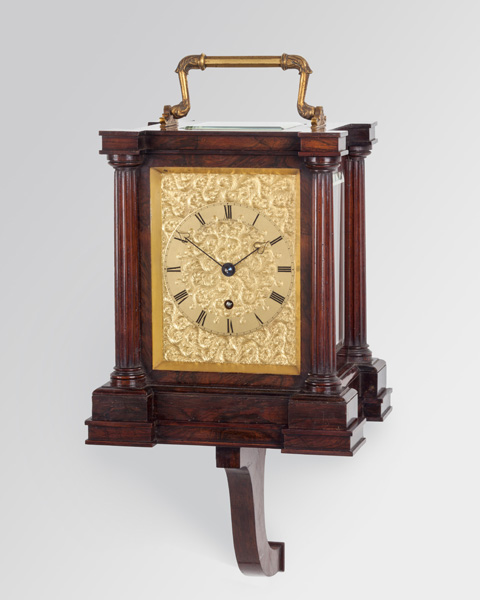
William Payne & Co. London

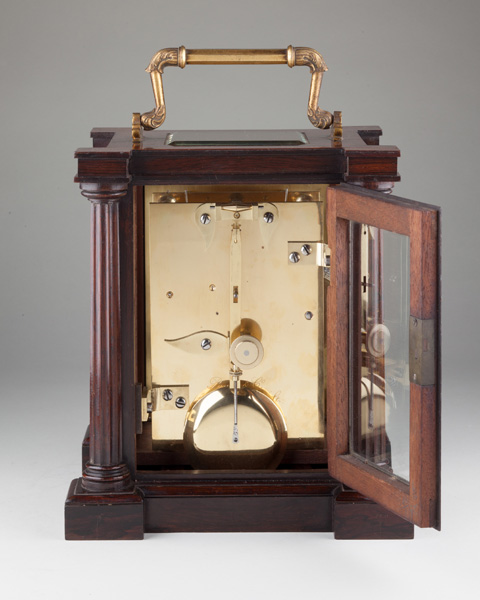
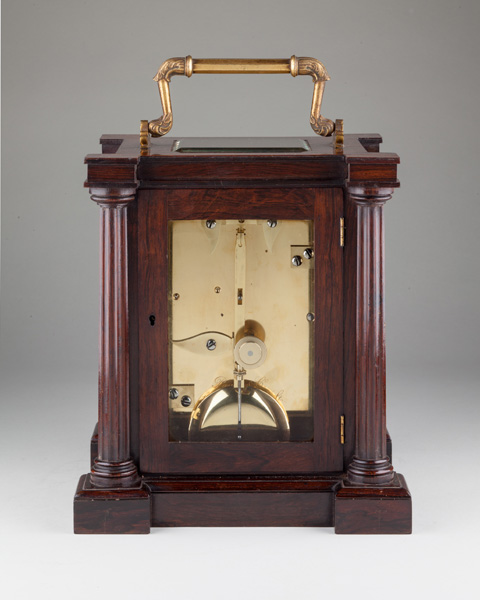
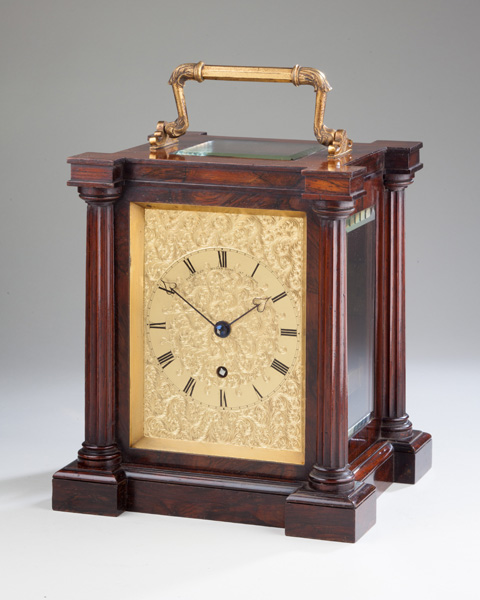
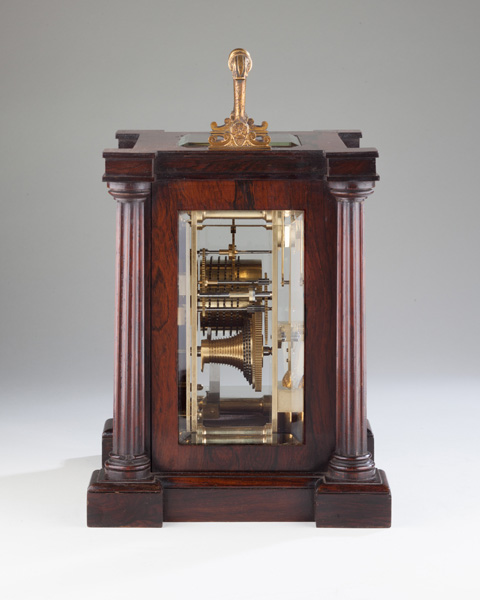
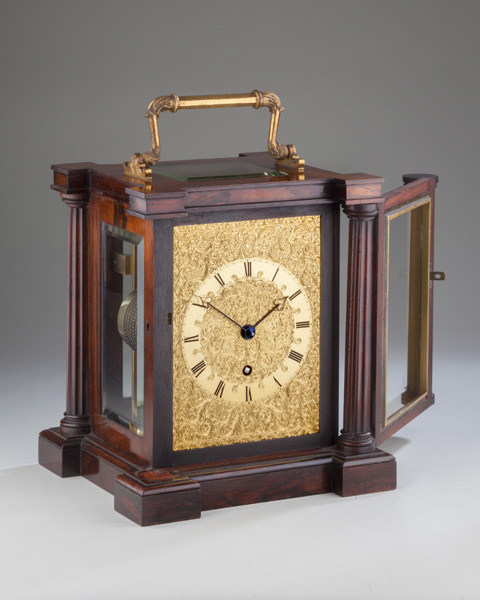
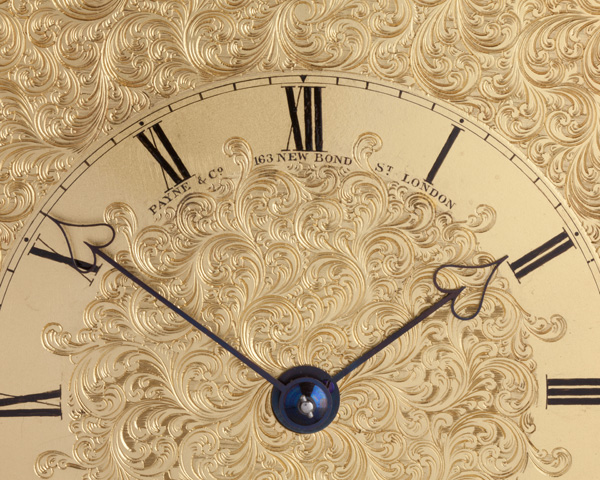
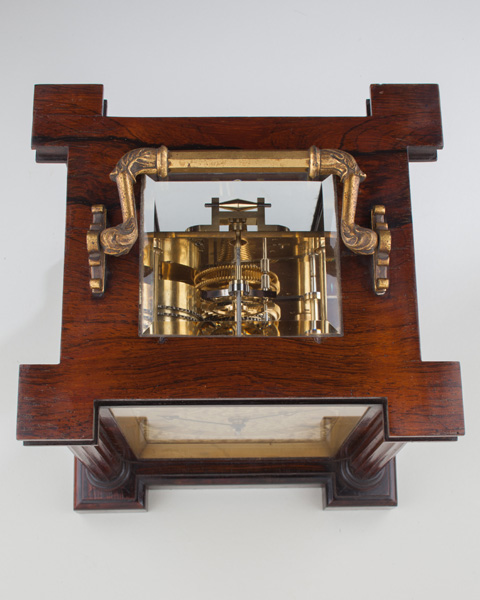
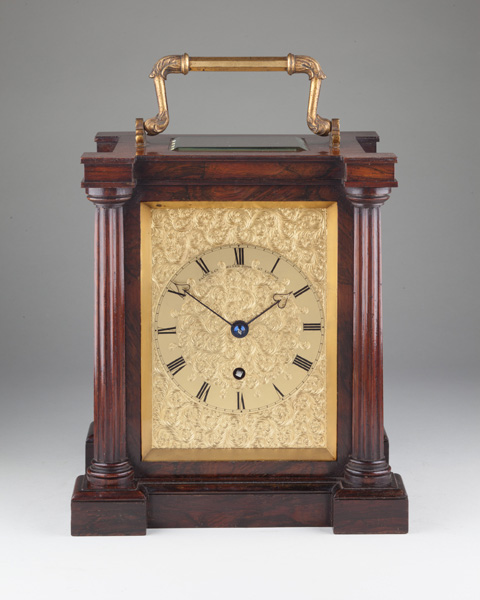
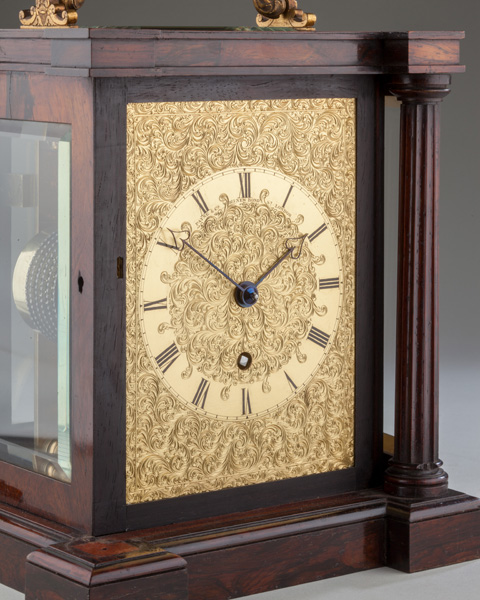
Circa 1830-1840
Sold
10 ½ inches high with handle down 17 ½ inches high including wall bracket
An exceptional rosewood architectural mantel timepiece. CASE The architectural case is dominated by four beautifully carved rosewood fluted columns at each angle on out-set plinths; the top has a plain gallery frieze and the original bevelled glass is set into the centre to view the escapement. The superb quality gilt-brass handle retains the original gilding and is cast with an octagonal centre and exquisitely chased foliage DIAL The dial is almost entirely decorated with sumptuous tightly engraved scrolling foliage; the plain gilt chapter ring has Roman chapters, delicate pierced blued steel heart-shaped hands and is signed PAYNE & Co. 163 NEW BOND St. LONDON MOVEMENT The high quality brass movement has a single chain fusee and spring barrel with maintaining power to the fusee, deadbeat escapement with high quality brass pendulum. The backplate is signed Payne & Co. 163 New Bond Street LONDON beneath the pendulum holdfast WALL BRACKET The fine quality purpose-made wall bracket is veneered with rosewood with a gallery frieze matching the frieze to the top of the clock case. NOTES This very bold masculine clock case and dial is so unusual that it was quite likely made to order to emulate the architecture in a particular room – for example a library with free-standing columns or atop a fireplace flanked by carved stone or wood columns. The solid rosewood columns are exquisitely carved with just a tiny amount of entasis to give each one a very gentle convex curve and the fluting still retains the sharp edges. The foliate engraving on the dial is of the finest quality and at least as good as any of the decoration on the cases made by Thomas Cole. The movement is elegant in its simplicity and quality with maintaining power, deadbeat escapement, screwed collet for the escape wheel and high-count pinions. William Payne & Co 1811 - 1875 163 New Bond Street, London William Payne is first recorded in 1816 at 62 South Moulton Street London. By 1825 he has moved to 163 New Bond Street where the company remains until the 20th century. Bibliography Loomes, B. (2006). "Watchmakers and Clockmakers of the World", N.A.G. Press, London Britten, F.J. (1986). "Old Clocks and Watches and Their Makers - A History of Styles in Clocks and Watches and their Mechanisms", Bloomsbury Books, London.
